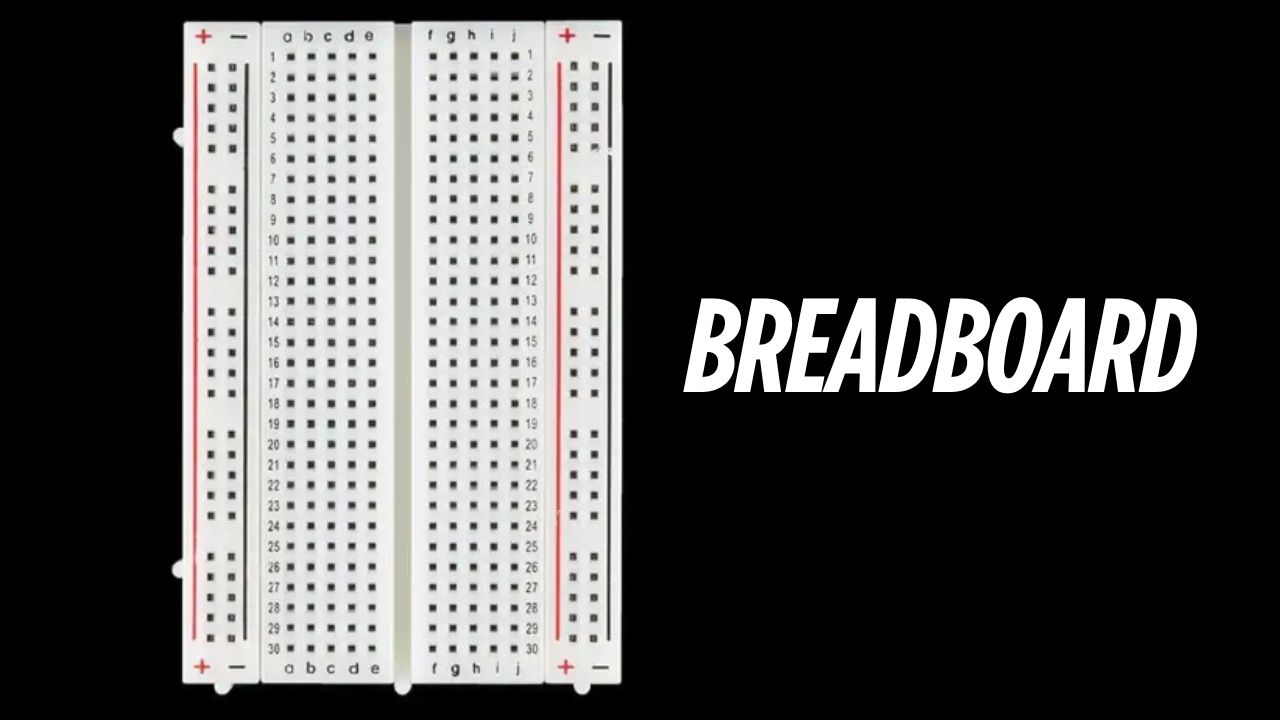A breadboard is a rectangular plastic board with a grid of tiny holes used to build and test electronic circuits without soldering. It allows components like resistors, LEDs, ICs, and wires to be easily inserted and removed, making it perfect for prototyping and experimenting.
🔧 Why Use a Breadboard?
- Solderless Connections – Components can be reused because no permanent (soldered) connections are made.
- Time-Saving – Circuits can be built and modified quickly.
- Safe for Beginners – No risk of burns or damage from soldering tools.
- Ideal for Prototyping – Great for testing circuit designs before final implementation.
🧩 Structure of a Breadboard
- Top and Bottom Power Rails
These long horizontal rows are used to distribute power (+ and -) across the board. - Terminal Strips (Main Grid)
The central part of the breadboard where components are placed. Holes in each vertical column (usually 5 holes) are electrically connected. - DIP Support (Middle Groove)
A horizontal gap (called a trough or ravine) separates the terminal strip in the middle. It allows integrated circuits (ICs) to be placed without shorting their pins.
⚡ How Breadboard Connections Work
- Holes in each vertical strip (columns a–e and f–j) are connected.
- The power rails (marked with + and –) run horizontally and are connected throughout their length.
- The central gap divides the breadboard into two halves, ideal for placing dual in-line package (DIP) ICs.
💡 Tips for Using Breadboards
- Use colored jumper wires to organize connections (e.g., red for power, black for ground).
- Use a multimeter to check connections and voltages.
- Avoid overcrowding to prevent short circuits.
- Keep components flat and firmly pressed into the board.
🔄 Advantages of Breadboards
- Reusable and cost-effective
- Great for learning and teaching electronics
- Easy to troubleshoot and modify
- No heat damage to components
🚫 Limitations
- Not suitable for high-frequency or high-power circuits
- Connections may come loose if not handled carefully
- Less durable than soldered circuits
The breadboard is an essential tool in electronics for building and testing circuits without permanent connections. Its ease of use and flexibility make it ideal for students, hobbyists, and engineers during the prototyping phase of circuit design

